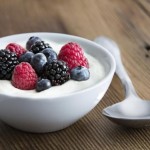Scallops, a Beginner’s Guide to Origin, Selection, Freshness and Preparation

Scallops have been highly regarded as not only a culinary treat but also as a significant piece of decore. With beautiful shells, the scallop is a bi-valve mollusk which uses an oversized adductor muscle to open and close. It is this muscle, within the shell, that we routinely consume in the United States.
Bay scallops, found in the bays from the New England area down to the Gulf of Mexico. To live, they consume algae and, because of this, the meat is white with a slight hint of pink coloration. Once captured and removed from water, they are unable to hold the shell closed. For this reason, they must be shucked so as to preserve natural moisture levels in preparation for refrigeration and sale. Small in size, with an adductor muscle generally only reaching �½ inch in diameter, the bay scallop can easily be overcooked.
In contrast to bay scallops, sea scallops are much larger. Found in deep waters from Newfoundland to North Carolina, the sea scallop provides the flavor most sought after by consumers. Most fresh within 24 hours of leaving the sea, the sea scallop is rare and is usually brought back to the mainland in frozen containers. The adductor muscle of sea scallops can reach sizes of up to two inches in diameter.
When purchasing both sea and bay scallops, freshness is the key factor. Most scallops have been treated with phosphates to ensure freshness while frozen. Unfortunately, when cooking pre-frozen scallops, the end product may produce a scallop that is overly moist and leaves liquid on the plate. To avoid this, purchase scallops labeled “chemical fee”. When preparing, cook as if they are a high quality meat, allowing only a few seconds to sear each side. Once the scallop appears opaque



